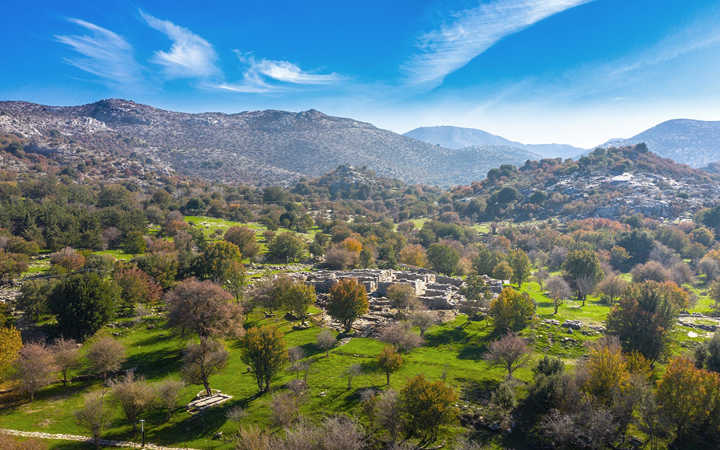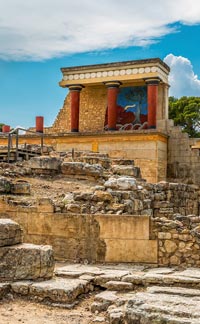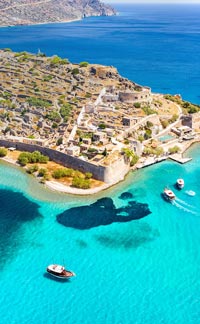Any place within Greece with "-inthos" at its end (Zakinthos comes to mind) means that the place name is pre-Greek. Zominthos on Crete is one such place. Perched on the slopes of Mt. Psiloritis, at 1,200 meters Zominthos is the highest altitude Minoan settlement discovered in Crete. A chance meeting between an area shepherd and well-known Cretan archeologist Yannis Sakellarakis led to the discovery of this palatial structure and its surrounding settlement on the road from Knossos to the sacred Ideon Cave, which is higher up on the mountain.
The shepherd lived in the nearby village of Anogia. In 1982 he invited Sakellarakis to visit a place he called "Zominthos." Recognizing the antiquity of the name, Sakellarakis accompanied the shepherd to the site, where he made one of the most important archeological discoveries on Crete of the latter 20th century.
The central building was quite large- 1600 square meters, or nearly a half acre. It was also built on the ruins of an older building. At this elevation, the theory is that the building was used only during the summer months because the winters as this elevation can be harsh. The building was thought to have been in use from the 1600's BC onward.
The palace, which was likely an industrial, administrative and religious center, being on the main trail from Knossos to the Ideon Cave near the summit of Psiloritis, was likely a stopping-off point for pilgrims. Sakellarakis found the building in very good condition, with some walls over 2 meters high.
The building was destroyed by fire and earthquake around 1600 BC, but it was rebuilt, and is still in good repair for its age. Its north facade is considered very well preserved. The facade contained a number of rooms that had evidence of frescoes, animal bones, and pottery shards.
There was a ceramic workshop in the western part of the building, including the remains of kilns outside the building proper. Other rooms contained numerous pottery vessels, including a 1.5 meter-high pithos, or storage container. There is also evidence that quartz was being worked in the workshop area. Quartz in ancient Crete was considered to have magical properties. In other rooms objects dating from the Roman Period were recovered, suggesting the ongoing use of the building into Roman times.
Archeologists working on the excavations used wearable cameras, a first in Greek archeological work. They have also made attempts to re-forest the area, planting numerous trees and shrubs.


















